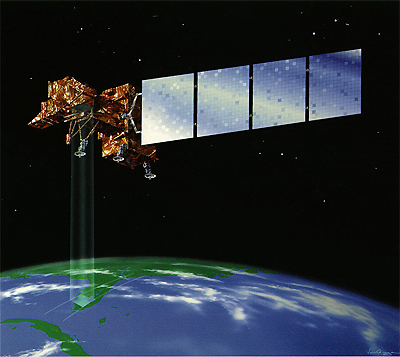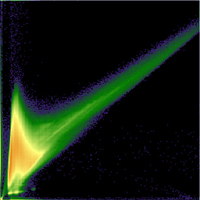6. Classification
Unsupervised classification
"The unsupervised classification uses the statistical distribution of the pixels within feature spaces exclusively to differentiate between classes."
What is a feature space?
A feature space and its dimensions are defined through the number of captured bands (spectral areas). The satellite LANDSAT 7 has for example, six channels, so every captured pixel (image point) from this satellite has six greyscale values. The pixels have a characteristic vector in the feature space with six dimensions. Only a maximum of three dimensions are presentable, but normally two channels (spectral areas) will be depicted in a graph (see below). Every pixel has, through its characteristic vector (its attribute value) a specific place in this "space".
Compilations or so called pixel clusters within the feature space represent specific classes. The closer two pixels are to each other in the feature space, the more similar they are and the greater the possibility that they belong to the same class.
There are two procedures for the classification or grouping of pixels:
- Beginning with individual pixels, the most similar pixels will be grouped together step by step. In the end, all of the pixels will be grouped into classes.
- Beginning with all pixels: A certain number of classes may be the objective. This procedure is called clustering.
A good and reliable classifier recognises significant differences in the characteristic vectors, which can then be coordinated with each class. These differences and similarities are almost always depicted in more than three presentable dimensions.
An unsupervised classification is often seen as preparation, i.e. the first step leading to a supervised classification. At this time it can be checked, whether the data can be distributed into the number of classes needed.


